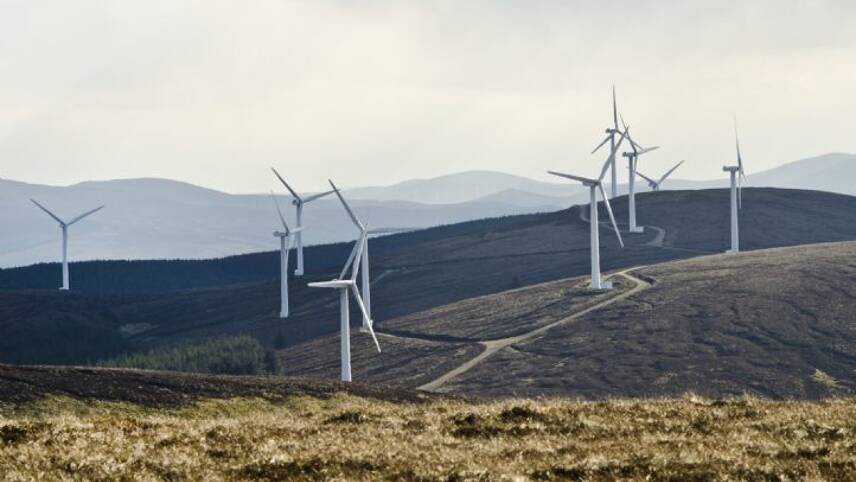Register for free and continue reading
Join our growing army of changemakers and get unlimited access to our premium content

In 1990
The organisation’s latest analysis on the UK’s shrinking carbon footprint, published today (4 February), reveals that progress regarding emissions reductions over the past ten years has remained steady, despite a period of decreased investment in low-carbon technologies following the financial crash of 2008.
Overall, it claims, the UK has reduced its total carbon footprint by 38% since 1990, – a slight increase on the 37% reduction recorded in 2016. According to official Government figures, the UK’s total carbon footprint stood at 600m tonnes of CO2 (MtCO2) in 1990 and 367MtCO2 in 2017.
The shift away from coal power generation has been the key driver of this decarbonisation, Carbon Brief claims, accounting for 36% of the reduction. Within the past 27 years, coal has gone from accounting for 67% of the UK’s energy mix to just 5%, the analysis states, as more renewable and nuclear arrays have come online.
The second-biggest contributor to reductions was found to be lower energy use among the industrial and residential sectors, as businesses and individuals turned to energy-efficiency measures like LED lighting and electric heating to reduce their bills. This shift was responsible for almost one-third (31%) of the UK’s progress, Carbon Brief claims, with savings from industry being greater than those from homes.
Carbon Brief claims that without these sizeable shifts towards renewable power generation and energy-efficiency, the UK’s overall carbon emissions could have been twice as high today as they were in 1990. In this scenario, the proportion of emissions related to electricity generation would also have been four times that of present levels.
“Without the factors that have driven major shifts in recent years, coal would have remained king, with gas, wind, bio-energy and solar all remaining negligible,” the report states
“Nuclear generation would have remained largely the same, with somewhat higher output in recent years.”
The publication of the analysis comes shortly after EnAppSys released a new outlook report predicting that renewables will overtake fossil fuels in 2020 to become the “dominant” source of power in Great Britain. This followed a reveal last November that the installed capacity of renewables had already surpassed that of fossil fuels.
Carbon Brief is predicting that the UK Government’s plans to remove coal from the electricity mix by 2025 is likely to spur further reductions in this area, but has warned that “additional and rapid” progress will be needed in the transport and farming sectors, if the UK is to meet the aims of its Fifth Carbon Budget. These forecasts come at a time when transport is the most carbon-intense sector in the UK and the Committee on Climate Change (CCC) is lobbying for a “fundamental reform” of the farming industry’s approach to sustainability.
Embodied carbon
Carbon Brief’s analysis additionally highlights the fact that products imported to the UK over the past decade have, largely, had a lower carbon footprint than their predecessors.
It states that the CO2 generated when making and transporting goods which are imported into the UK had largely canceled out the nation’s decarbonisation progress before 2007, largely due to sourcing products from coal-intensive nations such as China.
This trend began to turn in late 2007 to early 2008, according to Carbon Brief, with emissions embodied in imported goods making up just a small portion of the amount of carbon negated in the energy and transport sectors. Over the past decade, both domestic and consumption emissions have fallen by similar amounts, the analysis notes.
Sarah George


I don’t think many "individuals turned to energy-efficiency measures like … electric heating to reduce their bills". Although technologies such as Ground Source Heat Pumps are a great technology, they are hard to retrofit and have a tiny market share.
Domestically the savings in heat energy have come from two main things:
1) gas condensing boilers (which typically use around 15-20% less fuel per unit of heat output, and are often accompanied by upgraded controls which increase the savings further), and
2) better insulation, with the cumulative effect of publicly supported schemes for cavity walls and loft insulation more than offsetting the sometimes slow take-up in the private sector.
The only reason emissions have not fallen further has been the move to more (though often smaller) household numbers.
Could have, would have all meaningless phrases when we know they haven’t.
This a very helpful analysis from Carbon Brief.Just a couple of real world observations.
The first is that most of the emission savings in buildings have come not from changes in electricity usage, but from the decline in natural gas consumption( down 28% since 2005). The main use of energy in buildings is for heating- where gas has an over 80% dominance. Electricity is critical just for appliances, particularly lighting and white goods – where there have as reported been quantum improvements in energy efficiency
The second is that particularly over the last quarter century, there has not been that significant a change from heavy to light industry. It is commercial services and the public sector which have seen growth, and less efficiency gains than there should have been.
There remains enormous potential to decrease consumption way further, without damaging productivity. The French call it energy sobriety!